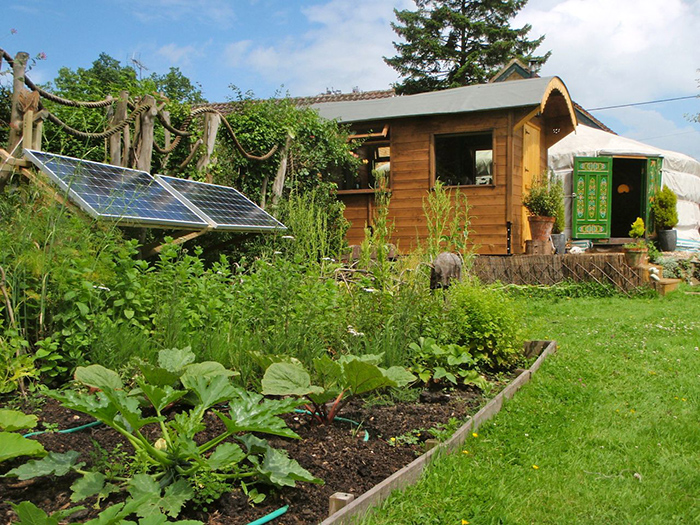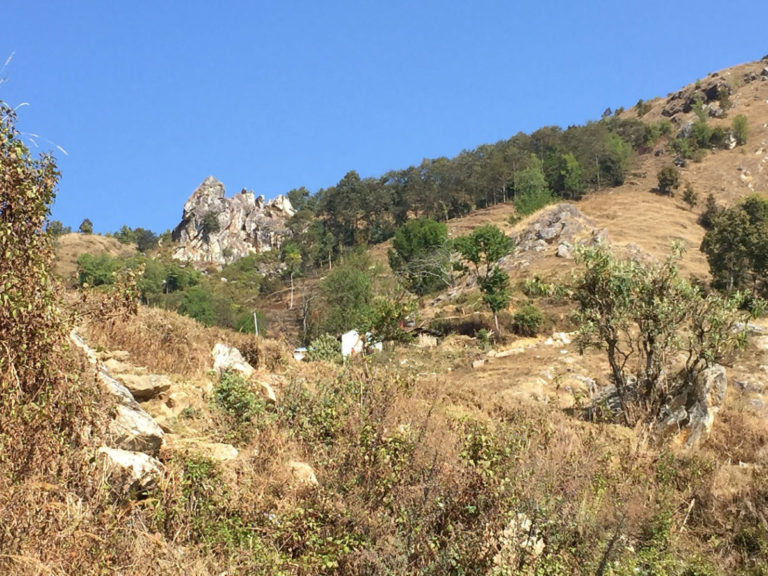Off-grid power systems have gained increasing attention in recent years as a reliable solution to provide electricity in remote areas where traditional grid power is unavailable or too costly.
By harnessing renewable energy sources such as solar, wind, and hydroelectric power, these systems can offer a sustainable and self-sufficient alternative for communities scattered across vast distances.
However, designing an off-grid power system requires careful consideration of various factors such as climate conditions, load requirements, and available resources.
We will explore the challenges and opportunities in implementing off-grid power systems in remote areas and highlight some successful examples that demonstrate their effectiveness.
Assess the needs and resources of the remote area
Understand the power requirements, climate, and available resources such as sunlight, wind, and water.
Power requirements can be determined by assessing the energy needs of the building or site, including lighting, heating, cooling, and electrical load.
Climate is a critical factor, as it affects the performance of renewable energy systems such as solar panels and wind turbines.
For example, in regions with high levels of sunlight, solar panels can provide a significant portion of the building’s energy needs, while in regions with high winds, wind turbines can be an effective source of power.
Available resources such as sunlight, wind, and water must also be considered, as they can greatly impact the feasibility and cost-effectiveness of a sustainable energy system.
For instance, if a site has ample sunlight but no wind, a solar-powered system may be the most appropriate option.
Understanding these factors can help identify the most effective and efficient sustainable energy solution for a specific building or site.
Determine the appropriate technology
Consider the specific needs and resources of the remote area to determine the most appropriate off-grid power solution, such as solar, wind, hydro, or biomass.
When it comes to selecting the most appropriate off-grid power solution for a remote area, it is essential to consider the specific needs and resources of the area.
Each off-grid power solution has its own strengths and weaknesses, and the best solution will depend on the unique conditions of the remote area.
For example, solar power may be the most appropriate solution if the area receives abundant sunlight and has limited wind or hydro resources.
However, if the area has strong winds or a reliable water source, wind or hydro power may be more suitable.
Biomass power, such as biofuels or biogas, may also be a viable option if there is a reliable supply of organic matter.
In order to determine the most appropriate off-grid power solution, it is important to conduct a thorough assessment of the remote area’s resources and needs.
This assessment should include evaluating the amount of sunlight, wind, and rainfall the area receives, as well as the amount of energy the area requires.
It is important to consider the infrastructure and technology available in the area, as well as any environmental concerns or regulations that may impact the selection of an off-grid power solution.
By carefully considering the specific needs and resources of the remote area, it is possible to identify the most appropriate off-grid power solution and provide reliable, sustainable power for the community.
Design the system
Design the off-grid power system to meet the specific needs of the remote area, including the type and size of the equipment, battery bank, and distribution system.
When designing an off-grid power system for a remote area, it’s essential to consider the specific needs of the location and tailor the system to meet those needs.
This involves selecting the appropriate type and size of equipment, battery bank, and distribution system to ensure reliable and efficient power supply.
For instance, if the location experiences extreme temperatures, the system may require specialized components that can withstand these conditions.
The battery bank must be sized to provide enough power for the desired applications and longevity, while the distribution system should be designed to minimize power loss and ensure efficient use of energy.
To begin, the type of equipment needed will depend on the specific energy demands of the remote area.
This may include solar panels, wind turbines, or a combination of both, as well as backup generators for periods of low sunlight or wind.
The size of the equipment will also be determined by the power requirements of the location, and the battery bank should be selected based on the type and size of equipment, as well as the desired applications.
For example, a larger battery bank may be required for a location with multiple power-intensive devices, such as refrigerators and lights, while a smaller battery bank may be sufficient for a location with only a few essential devices.
In addition to the type and size of equipment, the distribution system is a important aspect of the off-grid power system design.
The distribution system should be designed to minimize power loss and ensure efficient use of energy.
This may involve the use of specialized components, such as DC-DC converters, to step down the voltage of the energy stored in the battery bank to the appropriate level for the specific applications.
The distribution system should also be designed to provide a stable and reliable power supply, with features such as load management and remote monitoring to ensure the system is operating at peak efficiency.
Overall, the design of an off-grid power system for a remote area requires careful consideration of a range of factors, including the type and size of equipment, battery bank, and distribution system.
By selecting the appropriate equipment and designing the system with efficiency and reliability in mind, it is possible to create a power system that meets the specific needs of the location and provides a stable and reliable power supply for years to come.
Install the system
Install the off-grid power system in the remote area, ensuring that it is properly installed and configured.
To ensure a reliable and efficient off-grid power system, proper installation and configuration are important.
First, the system must be designed to meet the specific needs of the remote area, taking into account factors such as climate, location, and power requirements.
This includes selecting the appropriate renewable energy sources, such as solar or wind power, and determining the most efficient storage solutions, such as batteries or flywheels.
Once the system is designed, installation is the next step.
This involves carefully selecting and transporting all necessary equipment to the remote area, and constructing the system on-site.
This may involve setting up antennas, solar panels, and other hardware, as well as connecting the system to any necessary infrastructure, such as electrical wiring or communication networks.
After installation, the system must be properly configured to ensure optimal performance.
This includes setting up and testing the system’s controls, monitoring, and management systems, as well as programming the system to meet specific energy requirements and schedules.
Regular maintenance and upkeep must be scheduled to ensure the system remains in good working condition and continues to meet the remote area’s energy needs.
By carefully planning, installing, and configuring an off-grid power system, it is possible to provide a reliable and efficient source of energy to remote areas, supporting essential services and improving the quality of life for residents.
Provide maintenance and repair
Regularly maintain and repair the off-grid power system to ensure its longevity and optimal performance.
To maximize the lifespan and efficiency of your off-grid power system, it’s important to perform regular maintenance and repairs.
This involves checking and replacing worn or damaged components, such as batteries, inverters, and wiring, to ensure that the system is functioning properly.
Regular inspections can help identify and address any issues before they become major problems, such as a faulty battery that could cause the entire system to fail.
Furthermore, routine maintenance can help to optimize the performance of the system, allowing it to provide the maximum amount of power possible.
By investing the time and resources into regular maintenance and repairs, you can ensure that your off-grid power system continues to function at its best, providing a reliable and efficient source of power for your home or business.
Monitor and control
Monitor and control the off-grid power system to optimize its performance and ensure that it is meeting the needs of the remote area.
Monitoring and controlling an off-grid power system is important to ensure its optimal performance and fulfill the energy needs of the remote area it serves.
To begin with, it is essential to install a robust monitoring system that can track the system’s performance in real-time, including power output, battery charge levels, and energy consumption.
This information can be collected through a combination of sensors, meters, and data loggers, and can be viewed remotely through a web-based interface.
By regularly monitoring the system’s performance, operators can identify any issues or inefficiencies and make necessary adjustments to optimize the system’s output.
Remote control capabilities allow operators to adjust the system’s parameters, such as adjusting the charging and discharging rates of the battery bank, to match the changing energy demands of the remote area.
Proper monitoring and control of the off-grid power system enables it to operate at its maximum potential, providing reliable and efficient power to the remote area.
Integrate with existing systems
Integrate the off-grid power system with existing systems in the remote area, such as communication systems and water treatment systems.
Integrating the off-grid power system with existing systems in the remote area is a important step towards ensuring seamless operations and maximizing the benefits of the renewable energy solution.
This includes communication systems, water treatment systems, and other essential infrastructure.
By connecting the off-grid power system with these existing systems, we can ensure that the remote community has access to reliable and sustainable power, while also providing a platform for communication and data exchange.
For instance, the off-grid power system can be integrated with communication systems, such as satellite-based internet connectivity, to enable real-time monitoring and control of the power generation and distribution.
This will enable the remote community to access critical information and services, such as weather forecasts, healthcare services, and educational resources.
Moreover, the integration with water treatment systems can ensure a reliable supply of clean drinking water, which is essential for the health and well-being of the community.
In addition, the integration of the off-grid power system with existing systems can provide a blueprint for other remote communities to follow, enabling them to access sustainable and reliable power solutions.
This will help to reduce the dependency on fossil fuels, minimize carbon emissions, and promote a more sustainable future for these communities.
By taking a proactive and collaborative approach, we can ensure that the benefits of the off-grid power system are realized to their fullest potential, creating a brighter future for all.
Develop a sustainability plan
Develop a sustainability plan for the off-grid power system, including a plan for maintenance, repair, and replacement, as well as a plan for ongoing operation and management.
To ensure the long-term viability and sustainability of the off-grid power system, a comprehensive plan must be developed that includes strategies for maintenance, repair, and replacement, as well as ongoing operation and management.
This plan should be tailored to the specific needs of the system and the local environment, taking into account factors such as climate, topography, and resource availability.
Key components of the plan should include
* Regular monitoring and maintenance schedules to ensure the system is operating at optimal levels and to identify any potential issues before they become major problems.
* A detailed inventory of all system components and their expected lifespans, as well as a plan for replacing or repairing them as needed.
* A budget and funding plan to cover the ongoing costs of system maintenance and operation, as well as any unexpected repairs or upgrades.
* A training and education plan for local personnel to ensure they have the skills and knowledge necessary to operate and maintain the system effectively.
* A contingency plan for unexpected events such as natural disasters, power grid failures, or other system failures, to ensure the system remains operational and able to provide reliable power to the community.
By including these key components in the sustainability plan, the off-grid power system can be ensured to be reliable, efficient, and sustainable for years to come, providing a vital source of power for the local community.
Want More? Dive Deeper Here!
Hey there! If you’re the type who loves going down the rabbit hole of information (like we do), you’re in the right spot. We’ve pulled together some cool reads and resources that dive a bit deeper into the stuff we chat about on our site. Whether you’re just killing time or super into the topic, these picks might just be what you’re looking for. Happy reading!
- An off-grid energy future requires learning from the past | Brookings
- (PDF) Bridging Gaps In Energy Planning for First Nation Communities | M.A. (Peggy) Smith and Adam Cornwell – Academia.edu
- Bridging the information gap in solar energy | MIT News | Massachusetts Institute of Technology
- What’s Holding Back Off-Grid Solar – And How the Energy Access Sector Can Turn Things Around – NextBillion
- Grid or solar: looking for the best energy solution for the rural poor – James E. Rogers Energy Access Project






